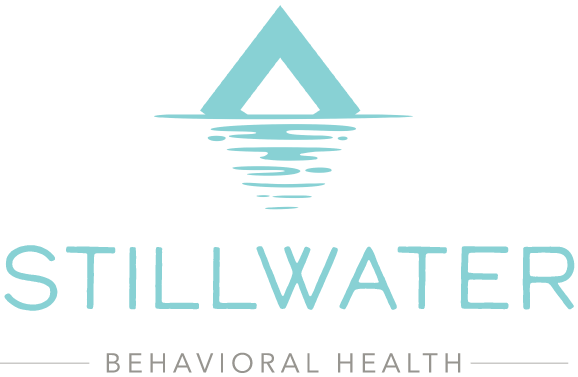Meth Addiction Health Risks Factors
Methamphetamine is a powerful synthetic stimulant that greatly impacts the body. Learn more about meth in this article.
What is Meth?
Methamphetamine, commonly known as meth, is a stimulant drug that can make an individual feel more alert and physically active. It is derived from amphetamine, but this synthetic stimulant can be more harmful to the body. This commonly misused drug can lead to various meth addiction health risks.
Questions about addiction?
Call Us Now: 1-866-232-9103
Your call is confidential with no obligation required to speak with us.
Drug Class
Meth is a Schedule II drug according to the Drug Enforcement Administration (DEA). This ranking is because of its addictive qualities and because methamphetamine use commonly leads to psychological dependency.1
Street Names
Methamphetamine is known by many names. While meth is a common shorthand, other street names include:2
- Batu
- Bikers coffee
- Black beauties
- Chalk
- Chickenfeed
- Crank
- Crystal
- Glass
- Ice
- Poor man’s cocaine
- Speed
- Trash
- Tweak
- Uppers
- Yaba
- Yellow Barn
What Does the Meth High Feel Like?

Initial Rush
When someone smokes or inhales methamphetamine, the drug is absorbed quickly into the bloodstream. Thus, the impacts of the drug can be almost immediate.
Initially, the individual will feel a very intense rush that can amplify the drug’s addiction and increase meth risks. This rush, also known as a flash or a high, only lasts a few minutes and is generally described as extremely pleasurable. If someone snorts or ingests the drug, the high may not be as intense or as immediate.
Binge and Crash
Like many other stimulant Drugs, methamphetamine can be misused by participating in a binge and crash pattern where the individual repeatedly takes the drug to experience the quick high. The pleasurable effects disappear rather quickly, and someone may need to take more to experience that high again.
A person experiences a high because methamphetamine impacts both the brain and central nervous system. When the drug enters the bloodstream, it stimulates the brain’s reward center. The reward center is generally responsible for feelings of happiness and pleasure and is incredibly stimulated when this substance is in the body.
Physical Effects
People will feel differently when on meth. While many of the feelings are rather pleasant, methamphetamine causes physical changes to the body such as increased heart rate or breathing. Additionally, those who use it can experience sweating, feelings of being hot or cold, nausea, and vomiting, which is commonly known as meth intoxication.
Because those who repeatedly take it often experience changes in their sleep patterns, there are many different impacts on the body. Not only can methamphetamine exasperate mental health symptoms, but those on it may feel fidgety and can experience the sensation of prickling that can feel like insects crawling under the skin.
This prickly feeling can sometimes make the individual scratch at their skin and leave open wounds that will scar. Commonly known as meth sores, these wounds have come to be associated with repeated use.3
Short-Term Health Risk of Meth Use
Because this drug is a powerful stimulant, the short-term meth addiction health risks relate to increased feelings of alertness and other physical impacts. Some of the short-term meth addiction health risks can include:
- Increased blood pressure
- Faster breathing
- Irregular heartbeat
- Disturbed sleep patterns
- Erratic behavior
- Euphoria
- Hyperthermia, which means increased body temperature
- Increased activity and feelings of wakefulness
- Decreased feelings of fatigue
Meth Half-life
Meth half-life refers to the amount of time that a drug spends in the body before becoming such a small amount that it does not have significant impacts on bodily functioning.
Generally speaking, meth half-life is about six to fifteen hours in total. This length of time means that meth typically has its highest impact for about twenty-four hours after use. Even so, this meth half-life means that methamphetamine may be able to stay in the bloodstream for up to thirty hours.4
Long-Term Health Risk of Meth Use

There are many meth addiction health risks. This drug can impact nearly all areas of the body and can be detrimental to an individual’s physical, social, emotional, and overall health.
Addiction is a long-term and chronic condition, and it can be difficult to overcome without the help of medical and psychological professionals. In addition to becoming addicted to the substance, there are other meth addiction health risks to be considered.
Premature Osteoporosis
Research has shown that those who consistently use methamphetamine and stimulate their essential nervous system may experience a loss of bone growth and strength which could lead to premature osteoporosis.5
Heart Issues
Methamphetamine use has been linked to cardiovascular health and an increased risk of certain diseases, such as heart disease, cardiovascular function, arrhythmias, and increased buildup of plaque.6
Brain Issues
Research has shown that the use of this drug can change brain structures and functions. Not only is the dopamine system (the brain’s reward pathway) disrupted, but physical changes in the areas associated with emotion, memory, motor speed, and verbal learning may be impacted by the constant use of meth.7
Severe Dental Problems
One of the most known meth risks is severe tooth decay. Commonly known as “meth mouth,” those who consistently use the drug may also experience dry mouth and teeth grinding.7
Hallucinations
Psychosis, which can lead to hallucinations and delusions, can be due to the use of methamphetamine. Psychotic symptoms may last for months, years, or even after the individual has stopped using it.7
HIV/ AIDS or Hepatitis
While an increased risk of HIV, AIDS, and hepatitis are direct meth addiction health risks, these diseases do occur at an increased risk because those who misuse this substance may share syringes, needles, and other paraphernalia.7
Meth Rehab Options
To cope with meth addiction health risks, an individual may want to attend rehab. Rehab involves going to a treatment center to participate in interventions and therapies to help cope with life without the use of synthetic stimulants. Additionally, rehab will help an individual cope with meth withdrawal and other symptoms.
Meth Withdrawal
Meth withdrawal is generally characterized by feelings of anxiety, depression, and increased cravings for the drug. Meth withdrawal can be an unpleasant experience and may lead to the individual using the drug again. Withdrawal symptoms can be addressed during rehab and can be mediated using medication-assisted treatment options.7
During the meth withdrawal timeline, an individual may experience an increased craving for carbs, psychosis, fatigue, depression, cravings, and anxiety within the first twenty-four hours and up to five weeks of treatment.8
Meth Detox
When someone receives treatment for meth use, they may experience significant side effects. Because the withdrawal is unpleasant, some people may use medication-assistant treatment to help cope with the side effects.
Treatment Options
There are several treatment options for meth addiction. These treatment options can help an individual cope with meth’s side effects and prevent an overdose. In addition, when someone attends addiction treatment, they can learn about the health risks and how to cope with the stressors of life without this drug.
Some common options for treatment include:
- Cognitive-behavioral therapy
- Medication-assistant treatment
- Matrix model
- Inpatient rehab
- Outpatient rehab
Resources
- https://www.dea.gov/drug-information/drug-scheduling
- https://www.dea.gov/sites/default/files/2020-06/Methamphetamine-2020_0.pdf
- https://www.ncbi.nlm.nih.gov/books/NBK430895/
- https://www.frontiersin.org/articles/10.3389/fnins.2014.00445/full
- https://www.researchgate.net/publication/260395911_Does_methamphetamine_affect_bone_metabolism
- https://www.ahajournals.org/doi/10.1161/ATVBAHA.119.312461
- https://www.drugabuse.gov/publications/research-reports/methamphetamine/what-methamphetamine
- https://onlinelibrary.wiley.com/doi/10.1111/j.1360-0443.2010.03066.x


